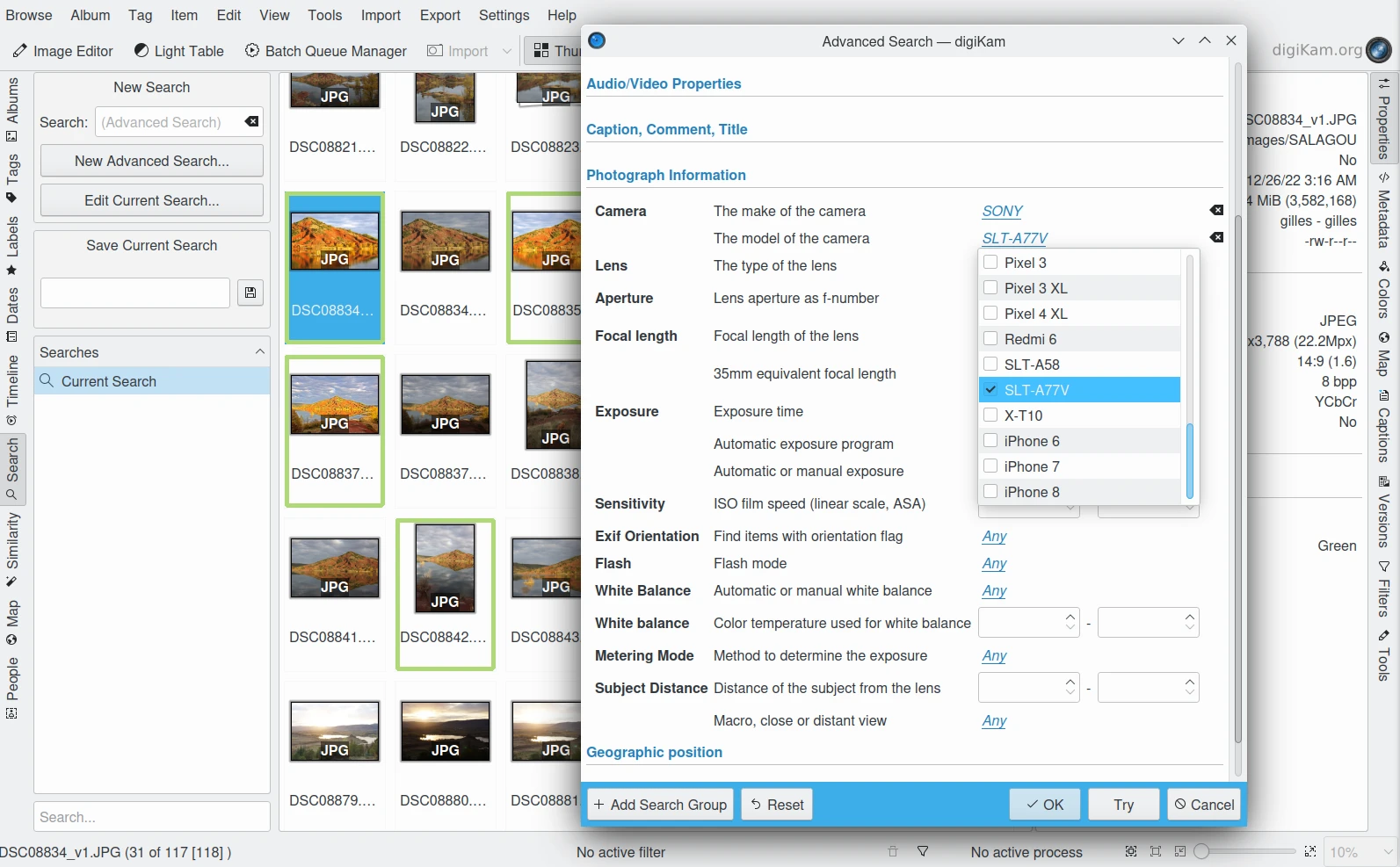Overview¶
Introduction¶
Can you find your digital photographs when you need them? Or do you spend more time sifting through your hard drive and file cabinets than you would like? Do you have a systematic approach for assigning and tracking data describing the content of your photos? If you make a living as a photographer, do your images bear your copyright and contact information, or do they circulate in the marketplace unprotected? Do you want your future grandchildren to admire the photographs you have taken? How do you ensure backup and the integrity of your data? Are you ready to replace your computer, your hard disk, your software and operating system and still manage to find your pictures or movies?
Definitions¶
Digital Asset Management (DAM) refers to every part of the process that follows taking a picture, from downloading the data to your computer, all the way through final output and permanent storage. Anyone who shoots, scans or stores digital photographs is practicing some form of DAM, but most of us are not doing so in a systematic or efficient way.
One generic definition of DAM is:
Digital Asset Management ingests, indexes, categorizes, secures, searches, transforms, assembles and exports content that has monetary, cultural, or personal value.
And since we're at it, here is another important definition:
Metadata is defined as data about data. Metadata is definitional data that provides information about, or documentation of, other data managed within an application or environment.
For the purposes of this manual, metadata is all the information about an image and its associated file.
DAM and digiKam¶
This section of the manual presents tools and practical advice on how to file, find, protect and reuse photographs, focusing on best practices for digital photographers using digiKam. We discuss downloading, renaming, culling, converting, grouping, backing-up, rating, tagging, archiving, optimizing, maintaining and exporting image files.
digiKam supports most DAM tasks by providing a unique and comprehensive set of tools that can be applied to its databases and the associated image files in your collection. This makes most DAM tasks fast and easy to perform. digiKam is based on open standards, so it will not confine you to a platform or lock you into a single application. It instead puts you onto the fast track to manage and find your photographs, allowing you to move on to any other platform, application, or system without losing any of your work. digiKam has features making it suitable for use by occasional users, enthusiasts, and professionals.

digiKam Advanced Search Tool Locating Several Items in the Database by Photograph Properties¶
The ability to make exact copies is one key thing that differentiates the archiving of digital images versus film. Digital images can be copied exactly, so you can make as many new originals as you want. In contrast, there is one original for a film image, and all copies made from that original will have a slightly lower quality. And if that wasn't bad enough, both the film original and any copies are slowly aging and disappearing. The only way to keep a film image forever fresh is to make a digital copy of it. And that is also the only way to protect it from all hazards.
Yet some may object that digital media don't last forever. In fact, the lifespan of today's digital media may be shorter than many types of film. But you can maintain digital media forever by periodically making new copies (e.g. every 1, 5, or 10 years), and always keeping at least 2-3 copies of the files in different physical locations. This is why digital images can be archived and protected against aging, fire and flood in a way that film never could. The good and bad news is then this: if you lose digital images and data, you will only have yourself to blame.